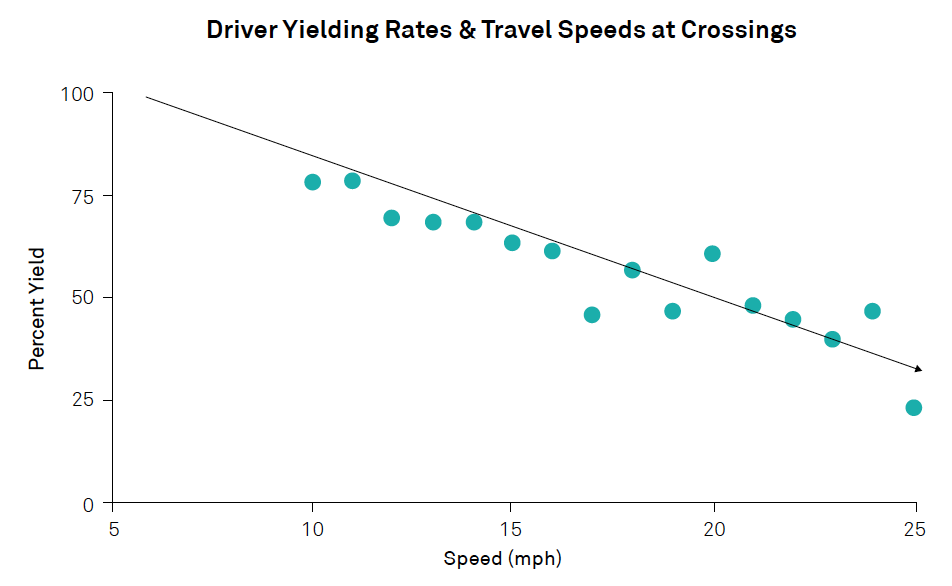Research shows that driver yield rates decline as speeds increase. As a result, motor vehicle turn speeds should generally be lower than 10 mph in protected intersections. This is achieved by building corner islands with small curb radii, typically 10-15’ or less, that guide drivers to take the turn at slower speeds.
When the bikeway setback is small or when the receiving lane of the turn is wide, a smaller curb radius is recommended. In most cases, the curb radius should not be larger than the setback.
The width of the cross-street receiving the turn also influences turn speed. This width should be kept as low as practical. Pedestrian islands or centerline hardening may be used to reduce turn speeds. Pedestrian islands can also reduce the distance that people biking and walking will be exposed to turning vehicles.

Lower speeds lead to higher driver yielding rates at urban roundabouts. Roundabouts share important geometric features with protected intersections. Graph source: Geruschat, D.R., Driver Behavior in Yielding to Sighted and Blind Pedestrians at Roundabouts. 2005.